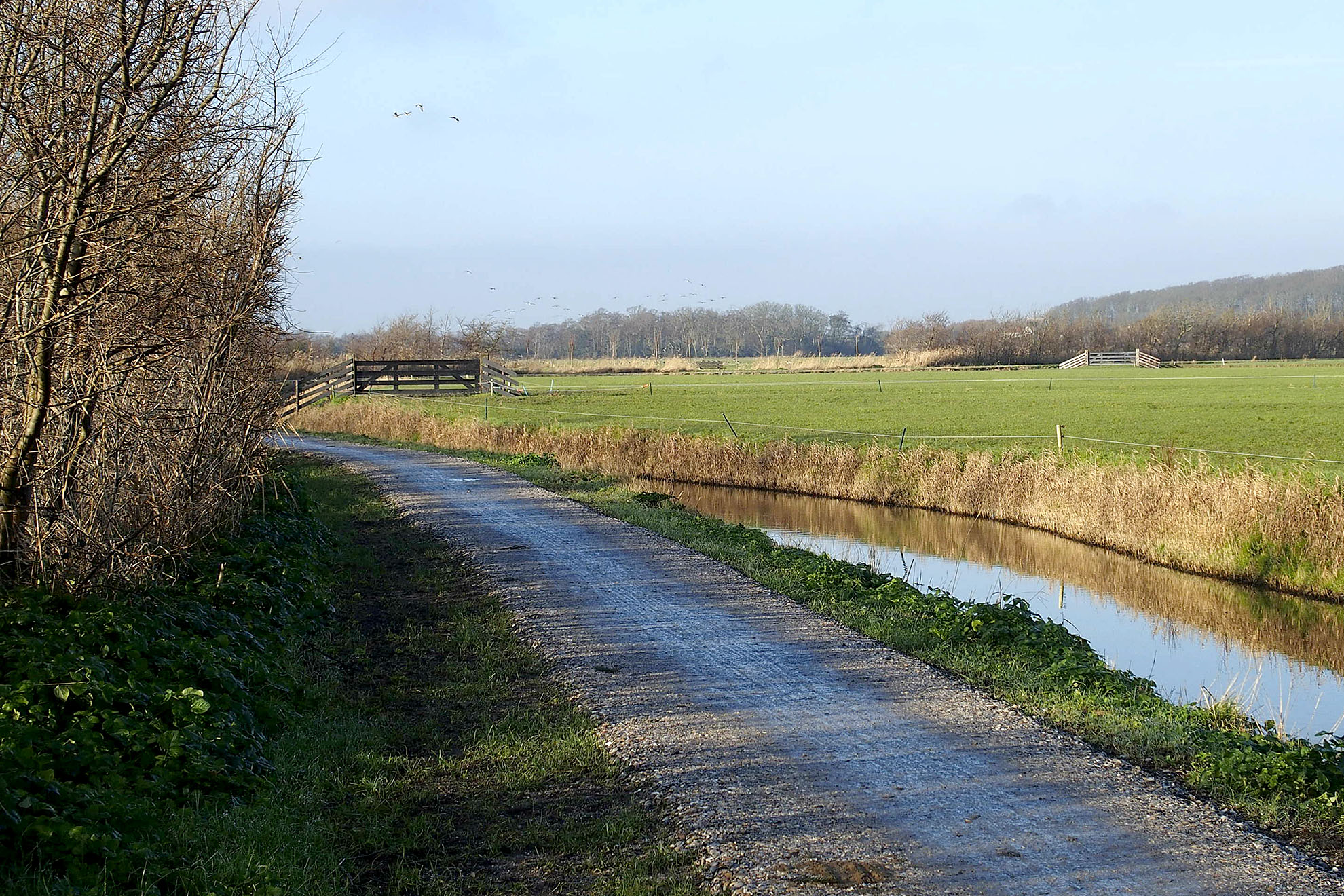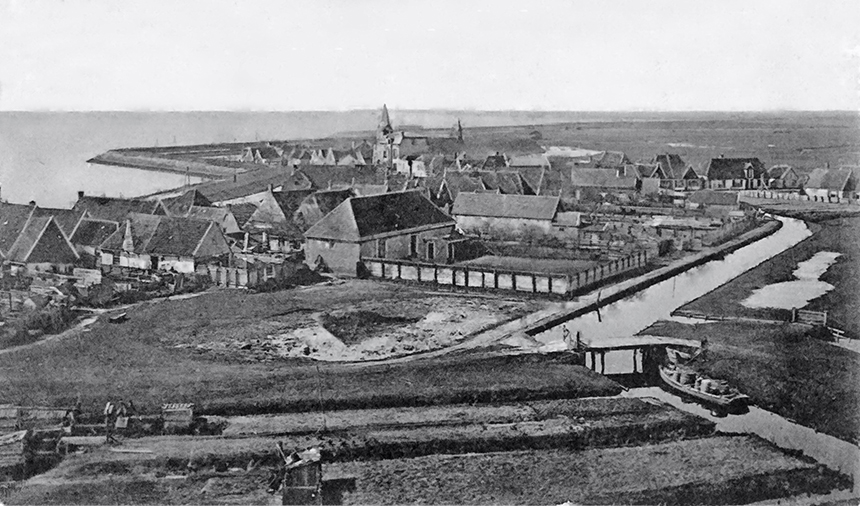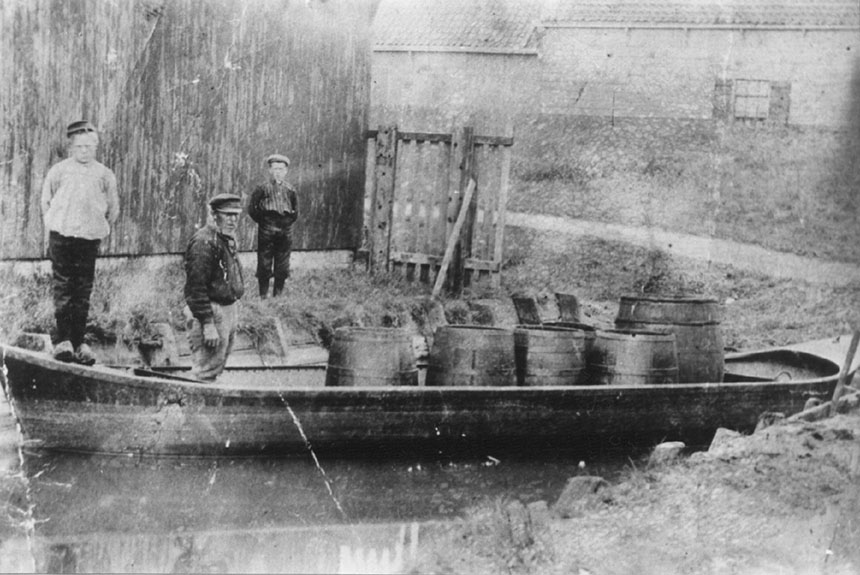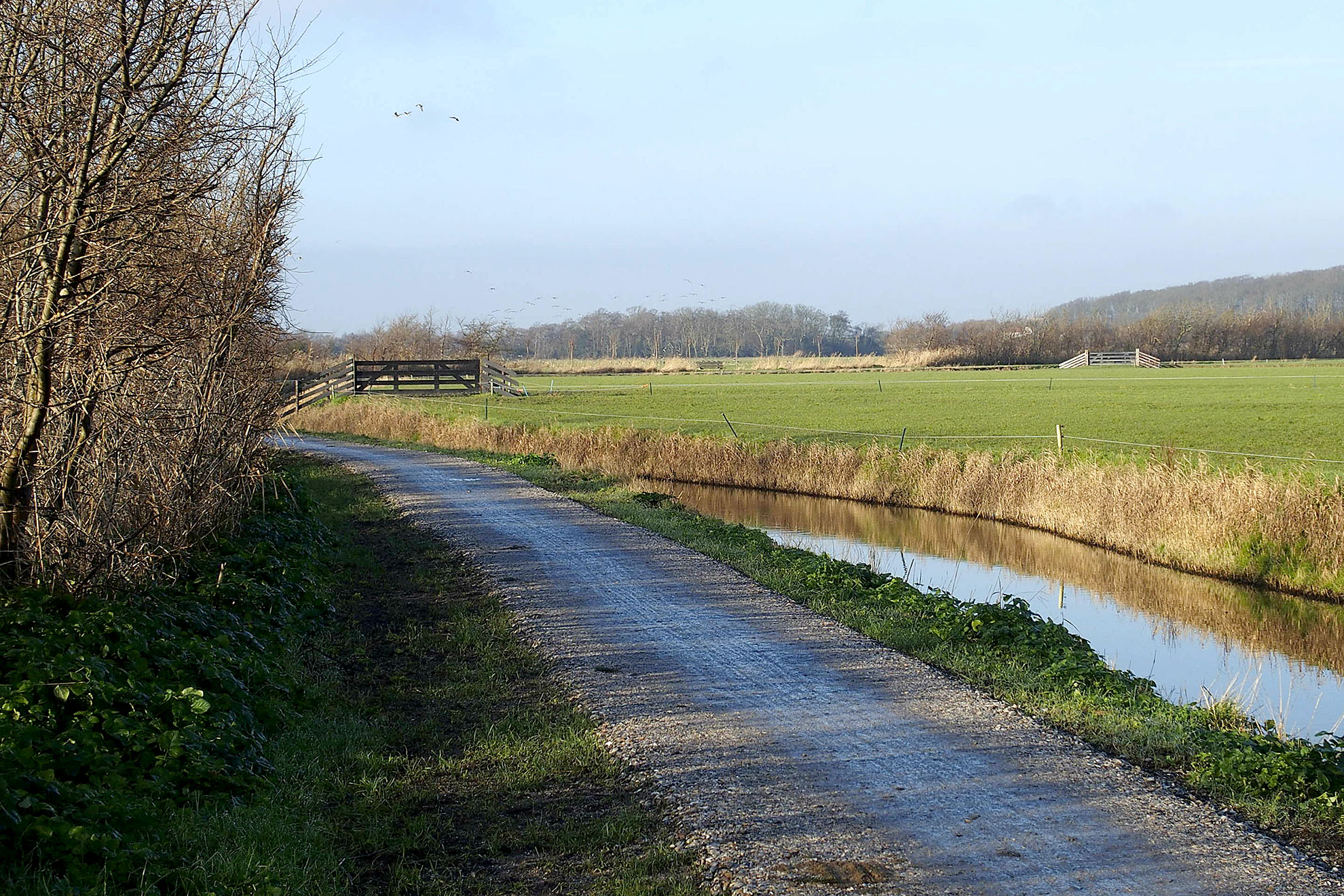Skillepaadje en Skilsloot

Het Skillepaadje en de Skilsloot waren in de glorietijd van de Reede van Texel een belangrijke verbinding. Voor voetgangers was het Skillepaadje het begin van de snelste route van Oudeschild naar Den Burg. Via de Skilsloot vervoerden schuiten de vaten met vers drinkwater, van de Wezenputten tot de waddendijk. Dit water was vooral bestemd voor de zeeschepen die voor anker lagen op de Reede.

Schelpen
In oude documenten kom je de namen ‘Schilpad’ of ‘Schelpad’ tegen. Het pad is van oorsprong een schelpenpaadje, aangelegd in 1619. Later is het bestraat met gele steentjes. Het was streng verboden om er met paarden of rijtuigen overheen te gaan.
Pompen, varen, takelen
Het drinkwater dat aan de voet van de Hoge Berg opgepompt werd, was heel zuiver en ijzerrijk. Dat maakte het lang houdbaar. Vandaar dat de zeeschepen graag een voorraad van dit water aan boord namen. De vaten werden bij de Wezenputten volgepompt, dichtgeslagen en met pramen naar de dijk vervoerd. Daar werden ze met behulp van een gangspil over de dijk getakeld en overgebracht in sloepen. Roeiers volbrachten de laatste etappe. Zij brachten de vaten aan boord van de zeeschepen. Het Weeshuis in Den Burg bestuurde de winning en de verkoop van het drinkwater.
Leggers, varkens en kardelen
Er waren grote vaten en kleinere, die allemaal een eigen naam hadden. ‘Leggers’ waren vaten van bijna 600 liter. Vaten van 300 liter werden ‘varkens’ genoemd, en vaten van 150 liter heetten ‘kardelen’. Een VOC-schip met 300 opvarenden nam voor de reis 170 leggers en 27 varkens mee. Dat betekende dus per schip heel veel werk, maar ook veel inkomsten voor het Texelse weeshuis.
Op naar de haven

Toen er in 1780 een haven was gegraven in Oudeschild, lag het voor de hand dat de Skilsloot doorgetrokken zou worden tot aan de haven. Daar konden de vaten met water gemakkelijker aan boord van de sloepen getakeld worden. Het hoogtepunt van de bedrijvigheid op de Reede was toen al voorbij. De vraag naar het water uit de Wezenputten nam snel af. De verlengde Skilsloot bleef wel nog lange tijd een verbinding voor de watervoorziening, maar nu alleen voor de bewoners van Oudeschild.









